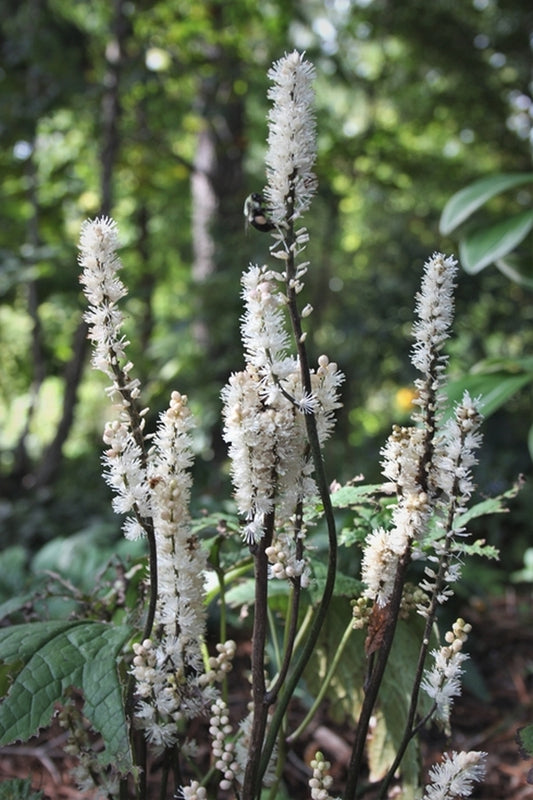Actaea is well-known for its alluring lobed leaves and uniquely bizarre berries. The American native, Actaea pachypoda, is commonly called doll's eyes because it produces a cluster with dozens of white berries, each with a dark purple spot in the middle. Actaea racemosa, or black cohosh, is native from Canada to as far south as Alabama and is known for its medicinal properties.
-
Actaea japonica var. japonica 'Silver Blush'
Item #: 3826
Zones: 5a to 8a, at least
Dormancy: Winter
Height: 30" tall
Culture: Part Sun to Light Shade
Origin: China, Japan, Korea
Pot Size: 3.5" pot (24 fl. oz/0.7 L)
Regular price $23.00Regular priceUnit price per
More Information About Actaea
Actaea is a northern hemisphere genus of woodland perennials related to cimicifuga (which some taxonomists mistakenly lump in actaea), ranunculus, helleborus, and clematis. Actaea is known for its attractive lobed leaves and bizarre berries. The American native, Actaea pachypoda, is called doll's eyes because it produces a cluster with dozens of white berries, each with a dark purple spot in the middle. This argus-eyed plant is native to forests in the eastern half of the US. Actaea berries are preceded by small cylindrical clusters of fluffy-looking, fragrant white flowers.
How to Grow and Care for Actaea
Actaea prefers part shade and a humus-rich, well-drained woodland soil with constant moisture. Actaea plants will re-seed themselves if the berries are left on the plant. Try combining actaea with acanthus or aspidistra for a texture contrast.
Actaea Companion Plants
You could make a macabre body parts garden with actaea (Doll's Eyes), chelone (Turtle Head), pulmonaria (Lungwort), remusatia (Elephant's ear), dicentra (Bleeding Heart), helicodocieros (Pig Butt Arum), and pyrrosia (Tongue Fern). When you are ready to buy actaea for your woodland garden, check out our online actaea for sale. It is worth noting that Actaea is also a North Carolina native plant.



